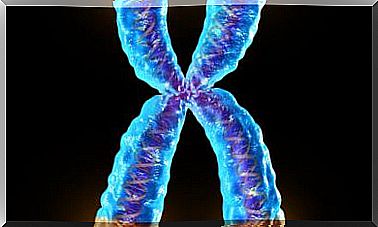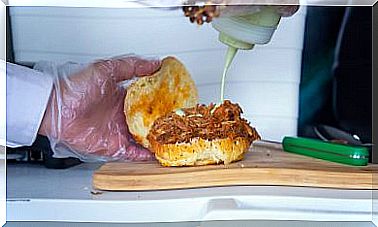Stereotyped Movement Disorder
According to the DSM-5 Diagnostic Criteria Reference Guide , stereotyped movement disorder is repetitive, apparently guided, and aimless behavior. This disorder can interfere with the social and academic activities of the child who suffers from it.
Stereotyped movement disorder is diagnosed early in the developmental period, as it begins at an early age. The good thing about this is that it can start treating as soon as possible.
Causes of stereotyped movement disorder
Many times, the causes of stereotyped movement disorder are not clear. In fact, sometimes, the symptoms that it presents can make this disorder be confused with others.
However, there are some clear reasons that can shed some light on the causes of stereotypical movement disorder. Next, we are going to see some of them.
Physiological effects of some substance

There are some drugs that can cause for a short time the same behavior that a patient with stereotyped movement disorder exhibits.
Unfortunately, children whose parents take drugs can easily access them. However, in these cases, the symptoms do not last in time, unless the exposure to the substance is continued.
Associated disorders
Lesch-Nyhan syndrome can present some of the symptoms of stereotyped movement disorder. The same happens if the child suffers an intellectual disability or has a head injury.
The problem with this disorder is that it can sometimes be confused with a symptom of autism, obsessive compulsive disorder or Tourette syndrome. For this reason, before reaching any conclusion, it is necessary to carry out the relevant tests.
Stereotypical Movement Disorder Symptoms
Stereotypical movement disorder presents repetitive movements that can range from clenching hands, biting nails, putting objects in the mouth or rocking, as well as numerous tics.
One of the problems is that stress, boredom, or frustration can make these movements worse. In some cases, it can cause injury to the child. These cases are very serious and must be treated urgently.
Available treatments

Depending on the diagnosis that has been made (whether the stereotyped movement disorder presents self-harm or not) the doctor will choose one treatment or another. Some of those that are available are:
- Changes in the environment : if the child injures himself, certain measures must be taken to prevent this from happening. Everything will depend on the object that he usually picks up to self-injure.
- Appropriate drugs : the doctor will take into account the age of the child to know what type of drugs can be prescribed. Some of them may be neuroleptics or catecholamine depleting drugs.
- Psychotherapy : it can be a great help and together with certain behavioral techniques great results can be achieved. Also, this may have the support of the above.
The biggest problem with this disorder is that it interferes with the normal life of the child. The movements they make are involuntary and, as much as they want to, they cannot control them.
If our son has been diagnosed with this disorder due to an injury, we must bear in mind that the movements can be permanent. With the indicated treatments there may be a slight improvement or greater control, but they will never be completely eliminated.
Have you detected this type of movement in any of your children? In the event that you present any repetitive movements, go to your trusted pediatrician. He will do the relevant tests to know what is happening and how it can be solved in the best way.









